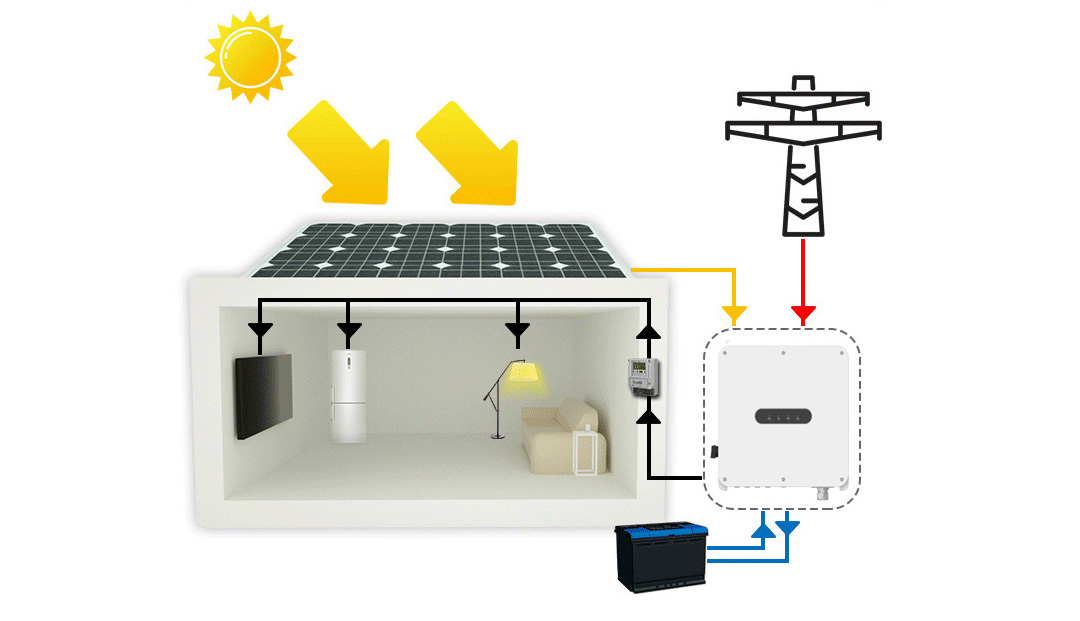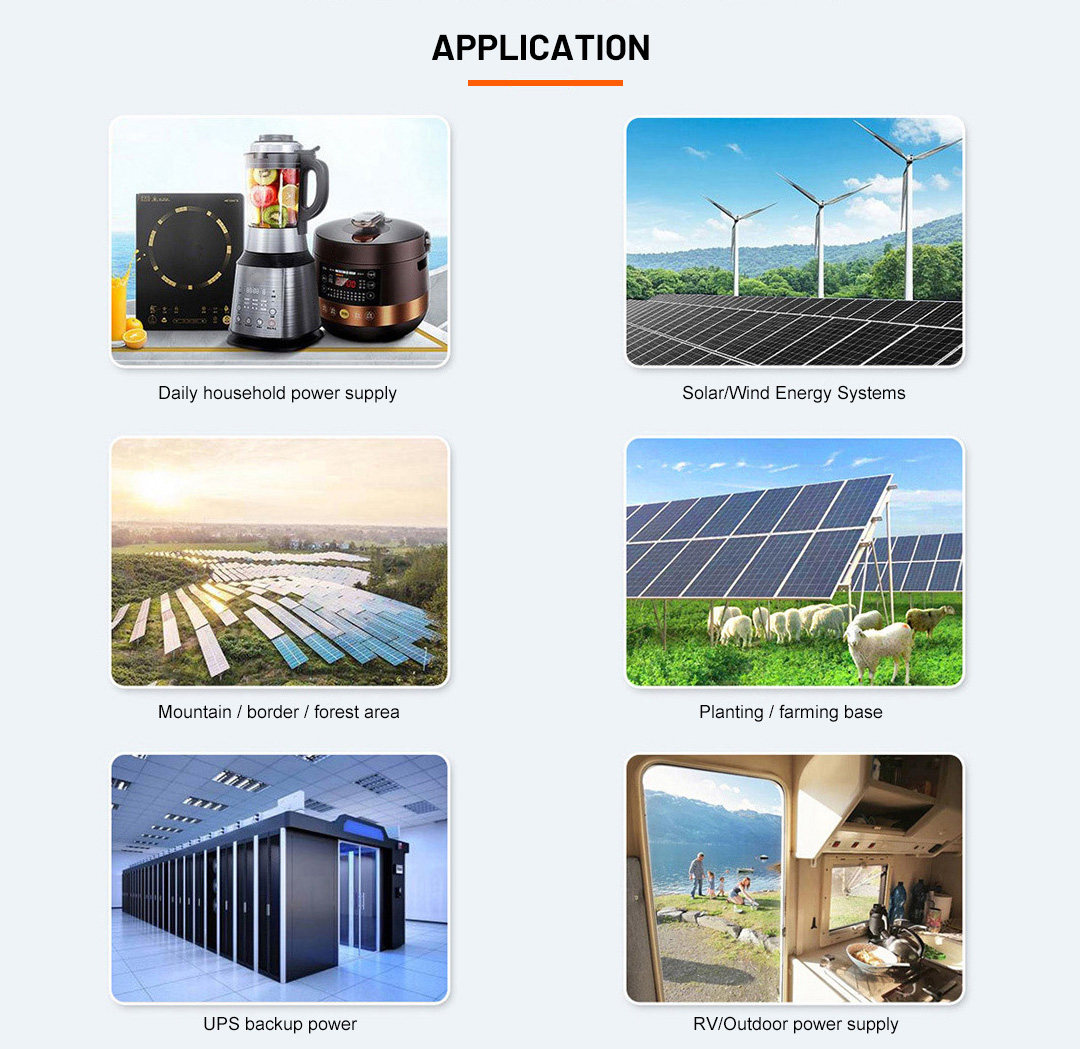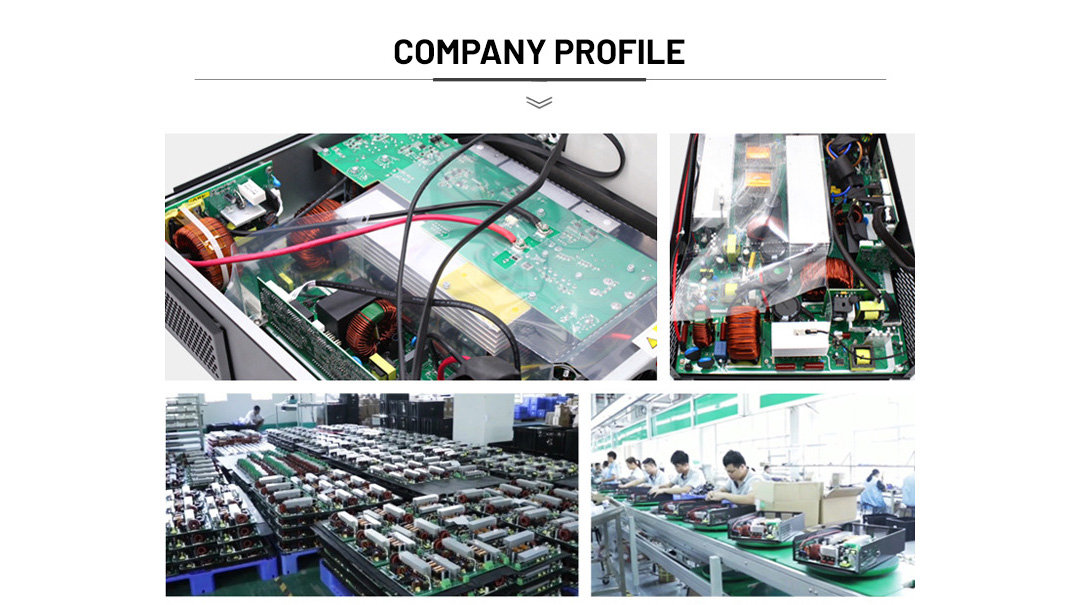MPPT Solar Inverter On Grid
Product Introduction
On grid inverter is a key device used to convert direct current (DC) power generated by solar or other renewable energy systems into alternating current (AC) power and inject it into the grid for supplying electricity to households or businesses. It has a highly efficient energy conversion capability that ensures maximum utilization of renewable energy sources and reduces energy wastage. Grid-connected inverters also have monitoring, protection and communication features that enable real-time monitoring of system status, optimization of energy output and communication interaction with the grid. Through the use of grid-connected inverters, users can make full use of renewable energy, reduce dependence on traditional energy sources, and realize sustainable energy use and environmental protection.
Product Feature
1. High energy conversion efficiency: Grid-connected inverters are capable of efficiently converting direct current (DC) to alternating current (AC), maximizing the use of solar or other renewable energy generation.
2. Network connectivity: Grid-connected inverters are able to connect to the grid to enable a two-way flow of energy, injecting excess power into the grid while taking energy from the grid to meet demand.
3. Real-time monitoring and optimization: Inverters are usually equipped with monitoring systems that can monitor energy generation, consumption and system status in real time and make optimization adjustments according to the actual situation in order to improve system efficiency.
4. Safety protection function: Grid-connected inverters are equipped with various safety protection functions, such as overload protection, short circuit protection, over-voltage protection, etc., to ensure safe and reliable system operation.
5. Communication and remote monitoring: the inverter is often equipped with communication interface, which can be connected with monitoring system or intelligent equipment to realize remote monitoring, data collection and remote adjustment.
6. Compatibility and Flexibility: Grid-connected inverters usually have good compatibility, can adapt to different types of renewable energy systems, and provide flexible adjustment of energy output.
Product Parameters
|
Datasheet
|
MOD 11KTL3-X
|
MOD 12KTL3-X
|
MOD 13KTL3-X
|
MOD 15KTL3-X
|
|
Input data (DC)
|
||||
|
Max PV power (for module STC)
|
16500W
|
18000W
|
19500W
|
22500W
|
|
Max. DC voltage
|
1100V
|
|||
|
Start voltage
|
160V
|
|||
|
Nominal voltage
|
580V
|
|||
|
MPPT voltage range
|
140V-1000V
|
|||
|
No. of MPP trackers
|
2
|
|||
|
No. of PV strings per MPP tracker
|
1
|
1/2
|
1/2
|
1/2
|
|
Max. input current per MPP tracker
|
13A
|
13/26A
|
13/26A
|
13/26A
|
|
Max. short-circuit current per MPP tracker
|
16A
|
16/32A
|
16/32A
|
16/32A
|
|
Output data (AC)
|
||||
|
AC nominal power
|
11000W
|
12000W
|
13000W
|
15000W
|
|
Nominal AC voltage
|
220V/380V, 230V/400V (340-440V)
|
|||
|
AC grid frequency
|
50/60 Hz (45-55Hz/55-65 Hz)
|
|||
|
Max. output current
|
18.3A
|
20A
|
21.7A
|
25A
|
|
AC grid connection type
|
3W+N+PE
|
|||
|
Efficiency
|
||||
|
MPPT efficiency
|
99.90%
|
|||
|
Protection devices
|
||||
|
DC reverse polarity protection
|
Yes
|
|||
|
AC/DC surge protection
|
Type II / Type II
|
|||
|
Grid monitoring
|
Yes
|
|||
|
General data
|
||||
|
Protection degree
|
IP66
|
|||
|
Warranty
|
5 Years Warranty/ 10 Years Optional
|
|||
Application
1. Solar power systems: The grid-connected inverter is the core component of a solar power system that converts the direct current (DC) generated by solar photovoltaic (PV) panels into alternating current (AC), which is injected into the grid for supplying to households, commercial buildings or public facilities.
2. Wind power systems: For wind power systems, inverters are used to convert the DC power generated by wind turbines into AC power for integration into the grid.
3. other renewable energy systems: Grid-tie inverters can also be used for other renewable energy systems such as hydroelectric power, biomass power, etc. to convert the DC power generated by them into AC power for injection into the grid.
4. Self-generation system for residential and commercial buildings: By installing solar photovoltaic panels or other renewable energy equipment, combined with a grid-connected inverter, a self-generation system is set up to meet the building’s energy demand, and the excess power is sold to the grid, realizing energy self-sufficiency and energy saving and emission reduction.
5. Microgrid system: Grid-tie inverters play a key role in the microgrid system, coordinating and optimizing renewable energy and traditional energy equipment to achieve independent operation and energy management of the microgrid.
6. Power peaking and energy storage system: some grid-connected inverters have the function of energy storage, capable of storing power and releasing it when the demand of the grid peaks, and participating in the operation of power peaking and energy storage system.
Packing & Delivery
Company Profile
Products categories
-

Phone
-

E-mail
-

Whatsapp
-

Top














